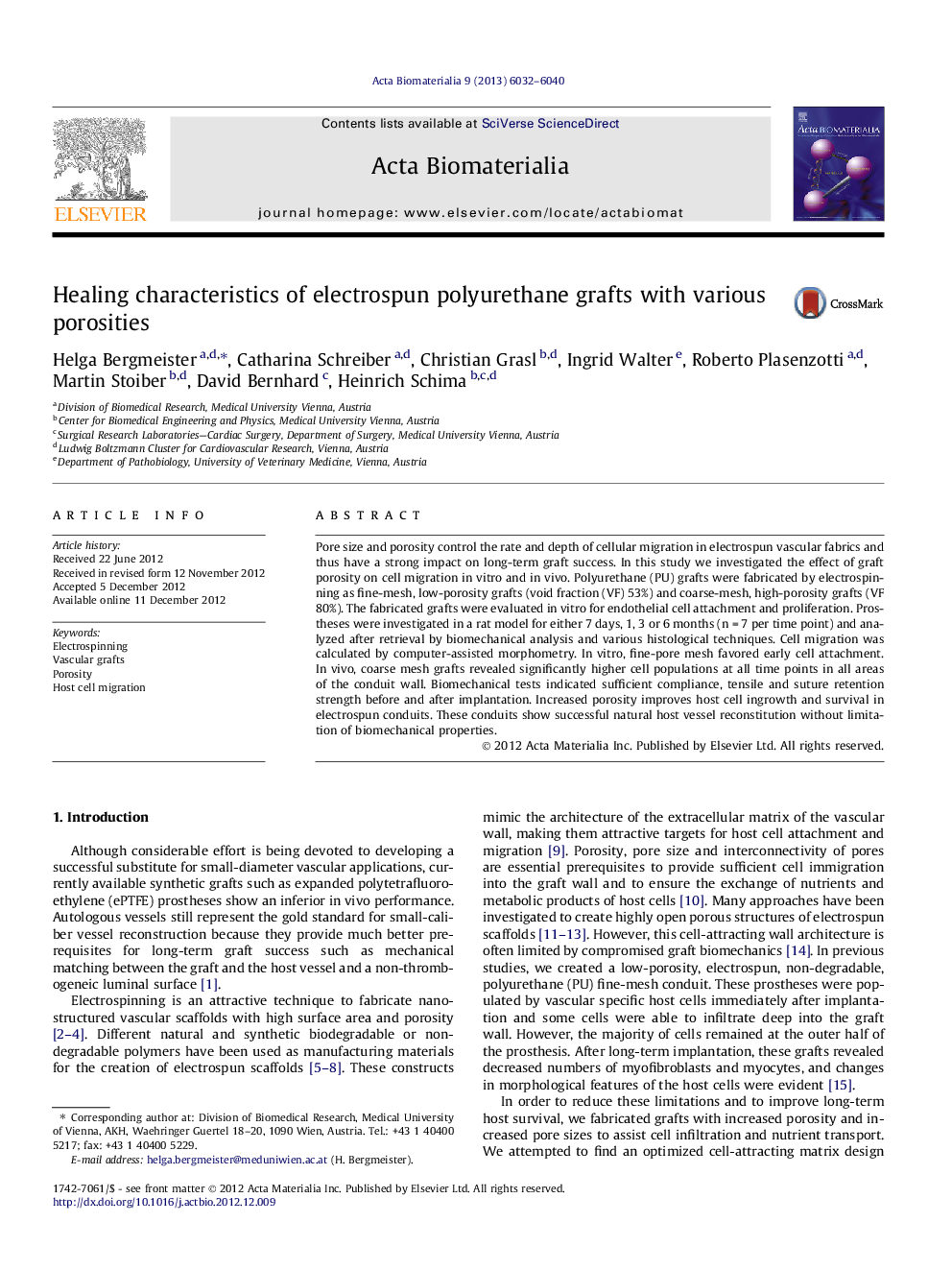| Article ID | Journal | Published Year | Pages | File Type |
|---|---|---|---|---|
| 10159848 | Acta Biomaterialia | 2013 | 9 Pages |
Abstract
Pore size and porosity control the rate and depth of cellular migration in electrospun vascular fabrics and thus have a strong impact on long-term graft success. In this study we investigated the effect of graft porosity on cell migration in vitro and in vivo. Polyurethane (PU) grafts were fabricated by electrospinning as fine-mesh, low-porosity grafts (void fraction (VF) 53%) and coarse-mesh, high-porosity grafts (VF 80%). The fabricated grafts were evaluated in vitro for endothelial cell attachment and proliferation. Prostheses were investigated in a rat model for either 7 days, 1, 3 or 6 months (n = 7 per time point) and analyzed after retrieval by biomechanical analysis and various histological techniques. Cell migration was calculated by computer-assisted morphometry. In vitro, fine-pore mesh favored early cell attachment. In vivo, coarse mesh grafts revealed significantly higher cell populations at all time points in all areas of the conduit wall. Biomechanical tests indicated sufficient compliance, tensile and suture retention strength before and after implantation. Increased porosity improves host cell ingrowth and survival in electrospun conduits. These conduits show successful natural host vessel reconstitution without limitation of biomechanical properties.
Related Topics
Physical Sciences and Engineering
Chemical Engineering
Bioengineering
Authors
Helga Bergmeister, Catharina Schreiber, Christian Grasl, Ingrid Walter, Roberto Plasenzotti, Martin Stoiber, David Bernhard, Heinrich Schima,
